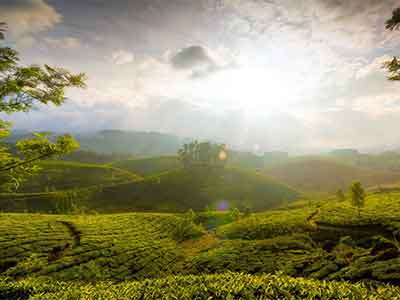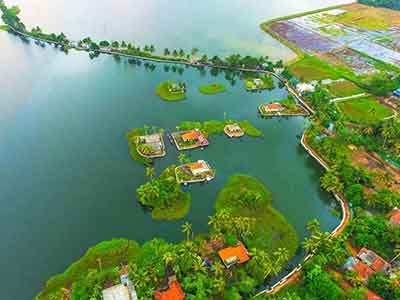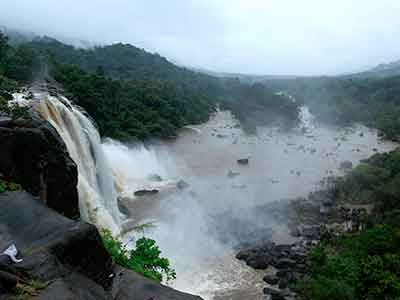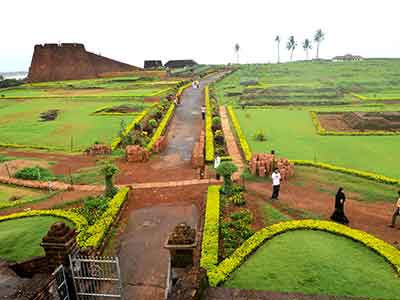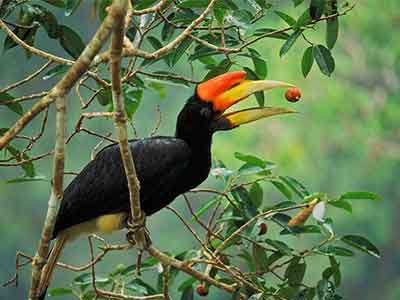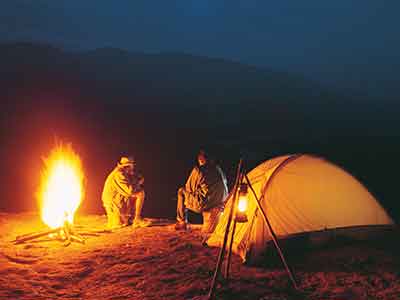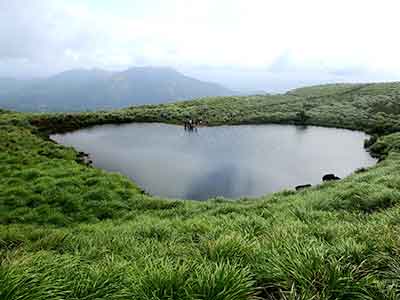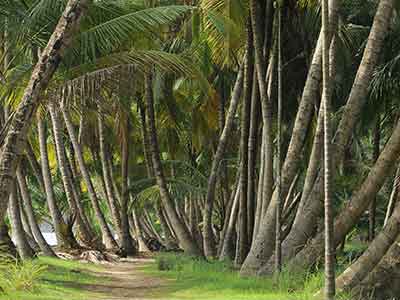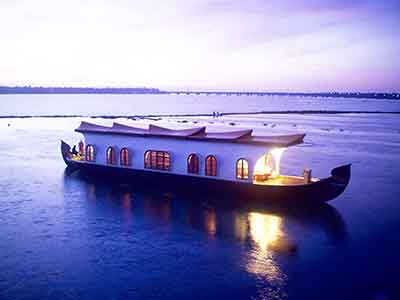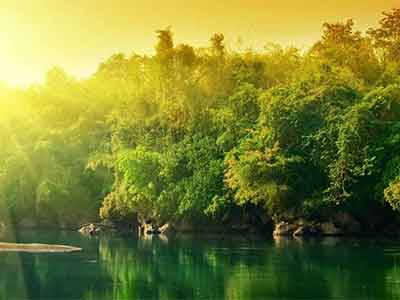Email: sales@travioholidays.in
Help: +91 98950 53303

The Adil Shahi Sultans who ruled for nearly 200 years have most emphatically left their mark on the architecture and art around the Bijapur fort. Subsequent sultans tried to outdo their predecessors in quantity, scale and splendour in the structures they commissioned or renovated.
Historical Bijapur consists of: the citadel, the fort and the remains of the city. Inside the fort and the city the Bijapur kings created their stellar contributions to Islamic culture in the Deccan. Outside the ramparts of the fort lie the ruins of what was once a large, thriving city, now filled with ruins in most part and in others with the remains of tombs, mosques, caravanserais and other edifices that have resisted the march of time. These structures are evidences of the splendour of ancient Bijapur. However the region also offers fascinating examples of the temple architecture style of the Chalukya daynasty of kings in the temples at Badami, Aihole, and Pattadakal near Bijapur.
Gol Gumbaz
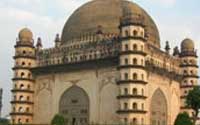
The mausoleum of Mohammed Adil Shah, the Gol Gumbaz was completed in 1656 by his court architect Yaqut of Dabul. Although deceptively simple in design, the structure marks the structural triumph of Deccan architecture.
The mausoleum contains one of the biggest single chamber spaces in the world. Built over a cuboid base, to support the enormous dome, eight intersecting arches created by two rotated squares create inter-locking spandrels, in the form of spherical triangles, forming a transition between the circular dome and the polygonal construct of the supporting masonry. Inside the mausoleum a square podium with steps on each side lies beneath the overarching dome. In the middle of the podium, a cenotaph slab on the ground marks the actual grave below. Running around the inside of the circular dome is the “Whispering Gallery” where even the faintest sound can be heard on the other side of the mausoleum due to the acoustical properties of the interior.
Ibrahim Rauza
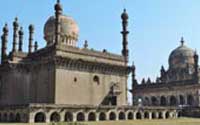
The Ibrahim-Rauza, built by Ibrahim ‘Adil Shah II (1580-1627), consists of his tomb and a mosque. The mosque and tomb rise in apposition, facing each other from foundations in a raised terrace, with a tank and fountain between them. The mosque has a rectangular prayer-chamber, with a facade of five arches, shaded by a ‘chhajja’ and a slender minaret in every corner.
The bulbous dome with a row of elongated petals depicted along its base rises from a square fenestration. The square tomb displays double aisles, the inner one pillared. Two narrow arches, next to the ones at each corner, lend relief to the façade. Inside, each wall features three arches, all panelled and embellished with floral, arabesque and inscriptional traceries. The chamber itself, containing the tomb, has a low curved ceiling made of joggled masonry with empty space between it and the dome.
Bijapur Citadel
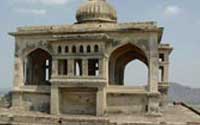
The once impregnable citadel of Bijapur that has repulsed many a siege, constructed over the ruins of the Ark Killa in 1565, contains numerous buildings fortifications and armaments that are evocative of their history. Within the fort, a cannon popularly referred to as ‘the monarch of the plains or the Malik-i-Maidan’ is colossal – the largest medieval cannon in the world at 4 m in length, 1,5 m in diameter and weighing 55 tons. This gun was brought back from a campaign in Ahmadnagar in the 17th century and now thrusts its barrel out menacingly from a rampart in the fort.
Below the cannon is the ‘Lion Bastion’ or Sher Burj, an allusion to the lions carved on its entrance. Situated higher along the slope is the Haider Burj or Upari Burj constructed in 1583 from where the entire citadel can be seen. The Adalat Mahal (Hall of Justice) constructed in the 17th century lies near an outer edge of the fort. Built in 1589, the Anand Mahal was the pleasure palace of Ibrahim II. The Gagan Mahal (Durbar hall) commissioned by Ali Adil Shah I in 1561 is situated across a street from the Anand Mahal. Other noteworthy structures inside the fort include a granary – the Saat Manzil and the splendid Jal Mandir situated in the middle of a pond.
Jama Masjid
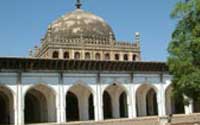
A mosque built by Ali Adil Shah I in the year 1578 after a victory over the neighbouring Vijayanagar kingdom in 1565, it is one of the largest mosques in South India. The Central Mihrab on the western wall is inscribed with lines from the Holy Koran – commissioned by Sultan Muhammad Adil Shah the inscription was completed in 1676 by Malik Yakut.
Torvi Narasimha Temple
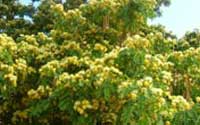
Torvi is located 5 km outside Bijapur. The Narasimha temple here is built underground, very close to Adil Shahi’s Sangeeth mahal. Near this temple is another Hindu temple dedicated to the goddess Lakshmi.
Basanta Vana
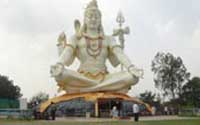
Situated about 3km from Bijapur, Basanta Vana is an 85 ft tall idol of Lord Shiva that is made of cement and steel. Reckon to be among the tallest idols of Lord Shiva in India, the site is gradually gaining a reputation as a pilgrimage centre.
Gagan Mahal
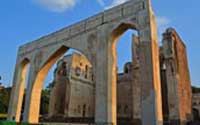
Gagan Mahal or Heavenly Palace was built by Ali Adil Shah I in 1561 as a palace with a durbar hall within. The palace has three impressive arches that are intact with the central arch being the widest. The durbar hall was located in the ground floor while the first floor contained the private residences of the royal family. Sadly, the structure is now in ruins.
Asar Mahal
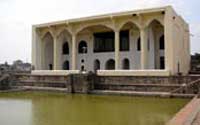
The Asar Mahal was built by Mohammed Adil Shah in about 1646 and served as a `hall of justice. The building is believed to have once housed a strand of hair from the beard of the prophet Mohammed. The rooms on the upper storey are seen decorated with frescoes and the ground in front displays a square tank. Here women are not allowed inside. Every year there is urs (festival) held at this place. Behind Asar Mahal one can see the ruins of the looming citadel of Bijapur.
Karwar
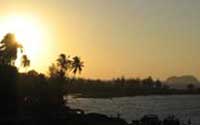
Situated at the mouth of the Kali river, Karwar`s geographical features have created a natural harbour. Besides being a port town, Karwar is also a centre for agriculture, a few manufacturing industries and tourism. It is believed that the14th century AD Moroccan explorer Ibn Battuta visited Karwar in the course of his travels and that the port was also used profitably by Arab and European merchants.
Several small mangrove covered islands lie off the Kali river estuary including Anjadip and Devagadaguda Islands. The sub-tidal regions of the islands have a high biodiversity. Karwar is also known for its cuisine predominantly using seafood and Fish curry, with cashews, coconut and rice is a staple dish.
Our Top Tour Packages in South India
The four states that constitute South India are composed of distinctive geographic regions - narrow plains that fringe peninsular South India beside the Arabian Sea and the Bay of Bengal with two mountain ranges running alongside and the rocky hardtop of the Deccan and fertile central plains.
